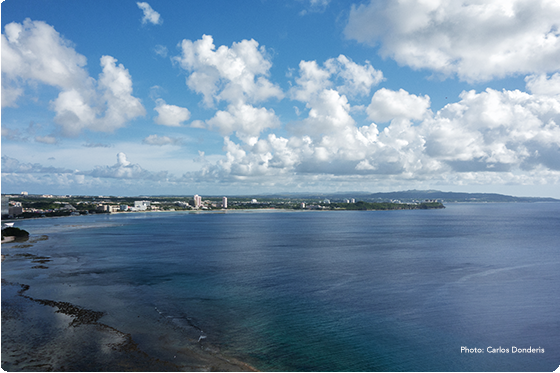
On April 26, 2021, the U.S. Supreme Court heard oral arguments in Guam v. United States, No. 20-382. Guam is appealing a ruling by the U.S. Circuit Court of Appeals for the District of Columbia that the territory is time-barred from seeking reimbursement from the U.S. Navy for the cost of cleaning up the Ordot Landfill. More specifically, the DC Court of Appeals had determined that the statute of limitations—i.e., the maximum period of time that a legislature sets for legal proceedings to be initiated after an event—expired before Guam brought its claim. The fundamental question before the Supreme Court is whether a Clean Water Act (CWA) settlement requires a party to bring a Section 113 contribution claim, which would be time-barred for Guam, as opposed to a Section 107 cost recovery claim under the Comprehensive, Environmental Response, Compensation, and Liability Act (CERCLA).
The Navy constructed and operated the 23-acre Ordot Landfill on the island of Guam in the 1940s. Over the subsequent decades, the landfill began to leak toxic chemicals into the Pacific Ocean. In the 1980s, the U.S. Environmental Protection Agency (EPA) identified the landfill as a toxic waste site and, upon investigation, found that the Navy was responsible. However, Guam also maintained and operated the landfill over the years. In 2002, the EPA sued Guam under the CWA for water pollution originating from the landfill. The two parties settled the dispute in 2004, and Guam closed the landfill seven years later. Then, in 2017, Guam filed a lawsuit against the United States (U.S.) alleging that the Navy was responsible for the landfill and thus responsible for the cost of closing and remediating the site.
The federal district court found for Guam and held that the territory could maintain its cost recovery action under § 107 of CERCLA. But on appeal, the D.C. Circuit Court reversed, finding that the 2004 settlement required Guam to bring a contribution action under § 113 of CERCLA, so the claim was time-barred. Guam appealed this decision to the Supreme Court, which agreed to hear the case on January 8, 2021.
Guam maintains that it was able to bring a cost recovery claim in 2017 under § 107, which has a six-year statute of limitations, because the landfill closed in 2011. The U.S., on the other hand, has argued that Guam was instead required to bring a contribution claim under § 113, which has a three-year statute of limitations. At oral arguments before the Supreme Court, the attorneys for both parties primarily focused on the language of the statutory provisions at issue in the case, for which each party presented their interpretation. The key term at issue was “resolved its liability” in § 113(f)(3)(B).
Guam’s attorney argued that the 2004 settlement could not have triggered a contribution claim and its three-year statute of limitations because the settlement was not related to CERCLA liability. He suggested that the statute should be read in context with the other provisions in the same section and in light of traditional contribution principles, which require common liability. Thus, he asserted that “resolved its liability” for “some or all of a response action” should be interpreted as applying only to CERCLA liability.
Guam’s attorney reiterated Justice Sotomayor’s observation during oral arguments that CWA and CERCLA address different harms. CWA addresses the discharge of pollutants into the water in violation of a permit, whereas CERCLA address the release of hazardous pollutants, with or without a permit. Furthermore, Guam’s attorney emphasized that the U.S. enjoys immunity for CWA claims but not CERCLA actions, which is why the U.S. sued Guam for a CWA action originally.
The attorney for the U.S. suggested that the gap, or absence of a specific reference following “liability,” combined with the broad definition of a “response action,” did not mean that the settlement must resolve CERCLA liability. He argued that the omission should be a significant indicator that Congress intended something different in § 113(f)(3)(B) because § 113(f)(1) specifically references CERCLA liability. He maintained that the omission should be read to indicate “liability for a response action.” A response action, as noted by Justice Breyer during the oral arguments, is a CERCLA-specific term with a broad and lengthy definition.
While the impact of the decision is important to Guam, its broader implications in regards to CERCLA is more than likely limited. This is because the EPA has since changed the language of its model settlement agreements to specify the precise consequences of settlements for CERCLA contribution claims. Nevertheless, the decision will establish clear precedent for lower courts, which are split on the issue.
Furthermore, this case presents an opportunity for the Court to speak on statutory construction. In light of recent personnel changes on the Court, the reasoning that it employs will be a guidepost for assessing how the Court will resolve other discrepancies in statuary interpretation across all areas of the law moving forward. As boring as statutory interpretation may sometimes seem, the Court’s decision is likely to create quite a stir within and beyond the environmental law community, particularly in light of how consequential it may prove with respect to how courts interpret gaps in statutory language.
Audio of the Oral Argument Here
Transcript of the Oral Argument Here
Statutory Language at Issue Here












